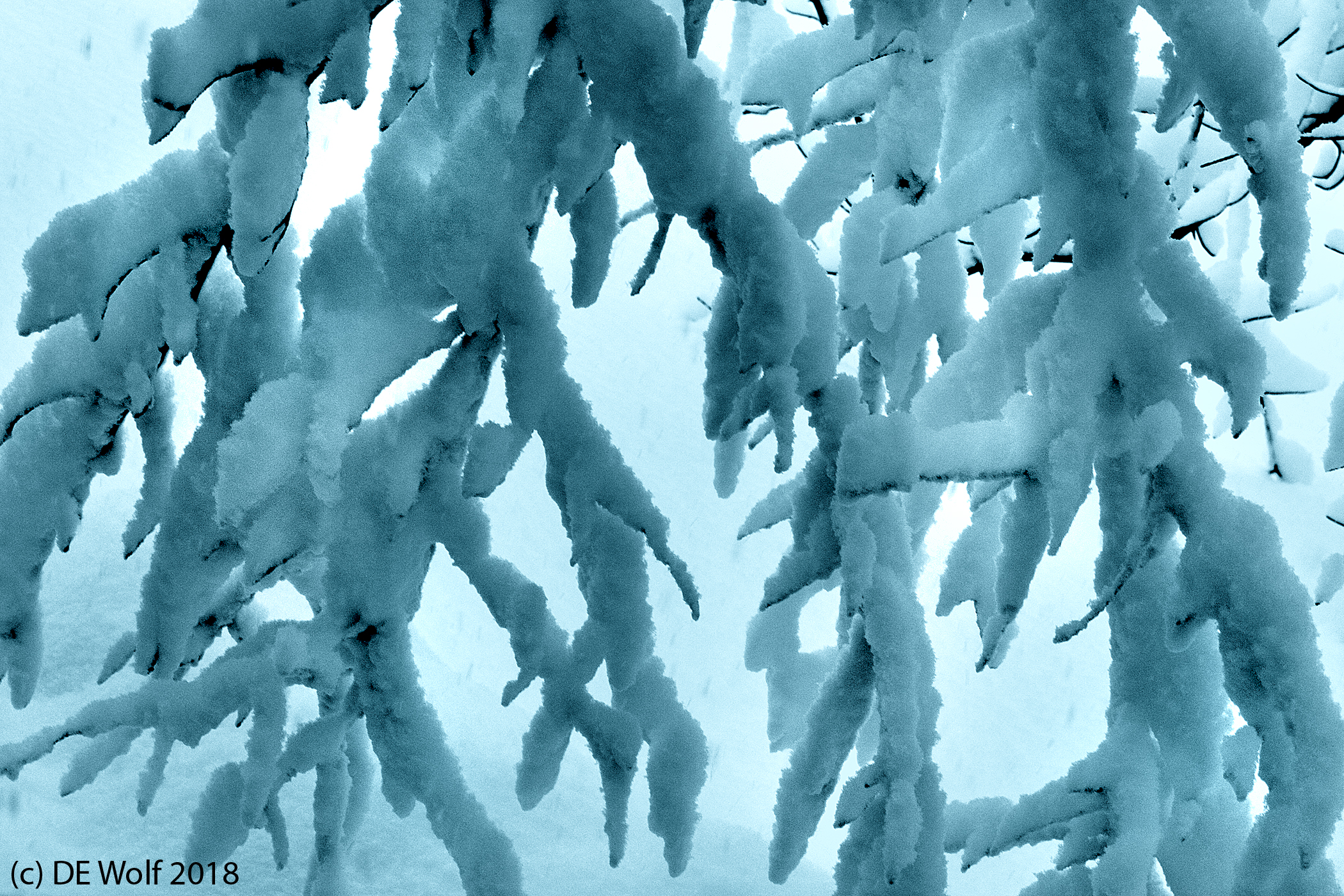Here we are with definite signs of spring, and I have not posted this photo that I took two weeks ago of the end of that day’s nor’easter. I noticed that the trees on the South side of my house were heavily laden with snow. I emphasize South because consistent with the snow coming out of the nor’east that was where it was both the most prevalent and the most protected. Now I will also emphasize that this is what you do not want to see as it can presage falling limbs and broken power lines. But it also offered the kind of tone-on-tone that I love so much photographically. Tone-on-tone always starts off as hazy whiteness and then it morphs. The into what is the big question. If you spread the contrast or equalize the histogram, you wind up with way too much contrast – meaning that the original sense of the image is not preserved. So there is a very subtle need to balance out the histogram and the contrast.
The other problem that I have found is that my usual sepia toning just doesn’t cut it with snow. It makes it just unnatural and muddy. Snow demands blueness. And this is the natural state, because snow, like the sky, preferentially scatters blue light – a phenomenon referred to as Rayleigh Scattering. So I have here taken a purely black and white image, both in reality and as created, and cold-toned or blue toned it. I very rarely do this. To the modern practitioner of digital photography this is merely a variation, a shift of the toning spectrum. But to those born of an earlier era there are remembrances of chemical toning. In those days, the means were chemical and the method was to replace the silver in the image with iron using ferric ferrocyanide, more commonly known as Prussian blue.
The problem with the digital print is that the odors of yore are lost. I sometimes miss the noxious smells of the darkroom, as I do the smell of rosin in the violin shop. Well, maybe not so much. But smell creates an additional dimension to the image.
Canon T2i with EF70-200mm f/4L USM lens at 70 mm, ISO 200, Aperture Priority AE Mode, 1/60th sec at f/9.0 with no exposure compensation.

